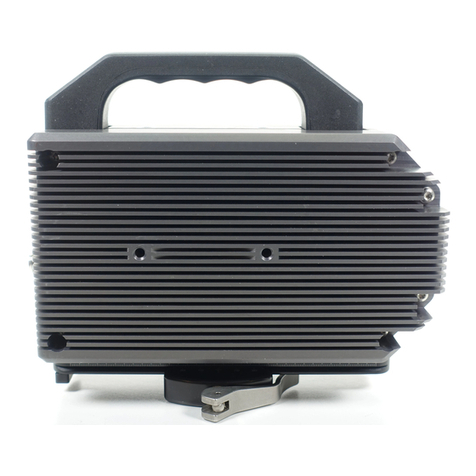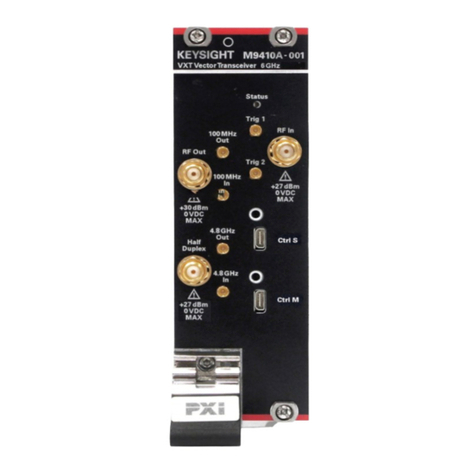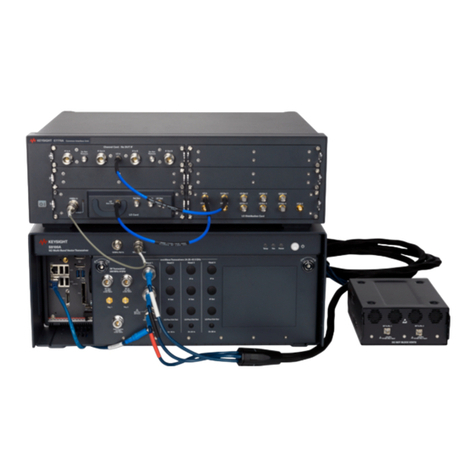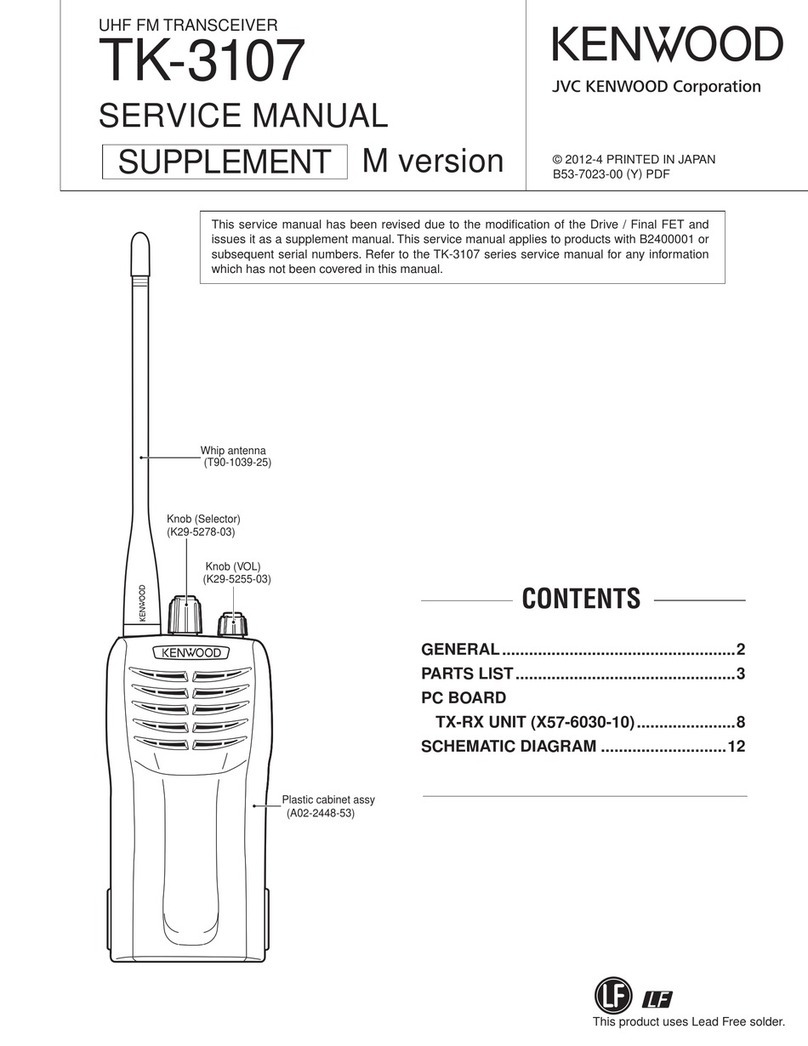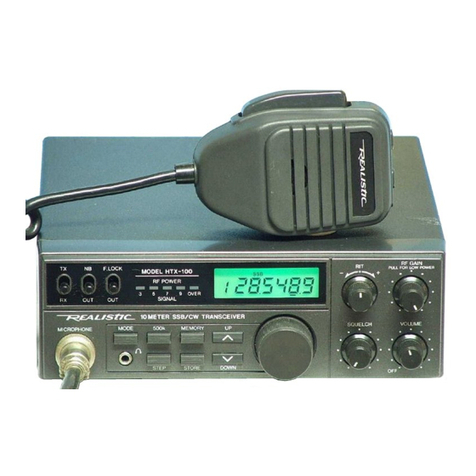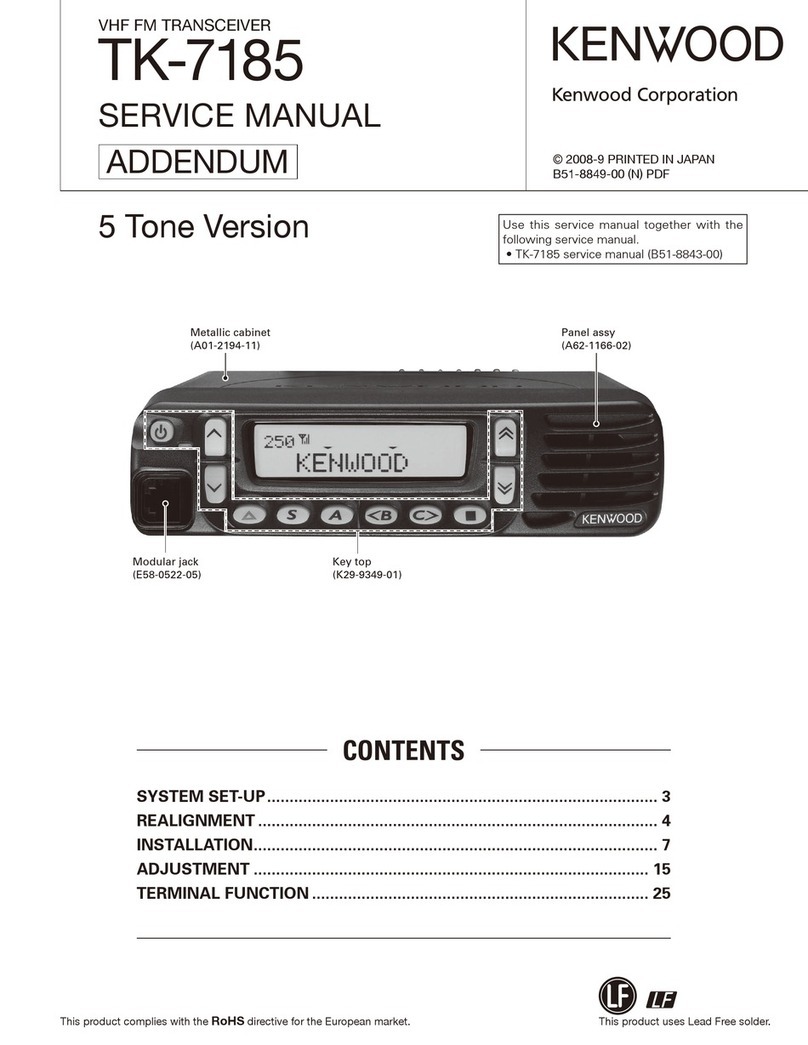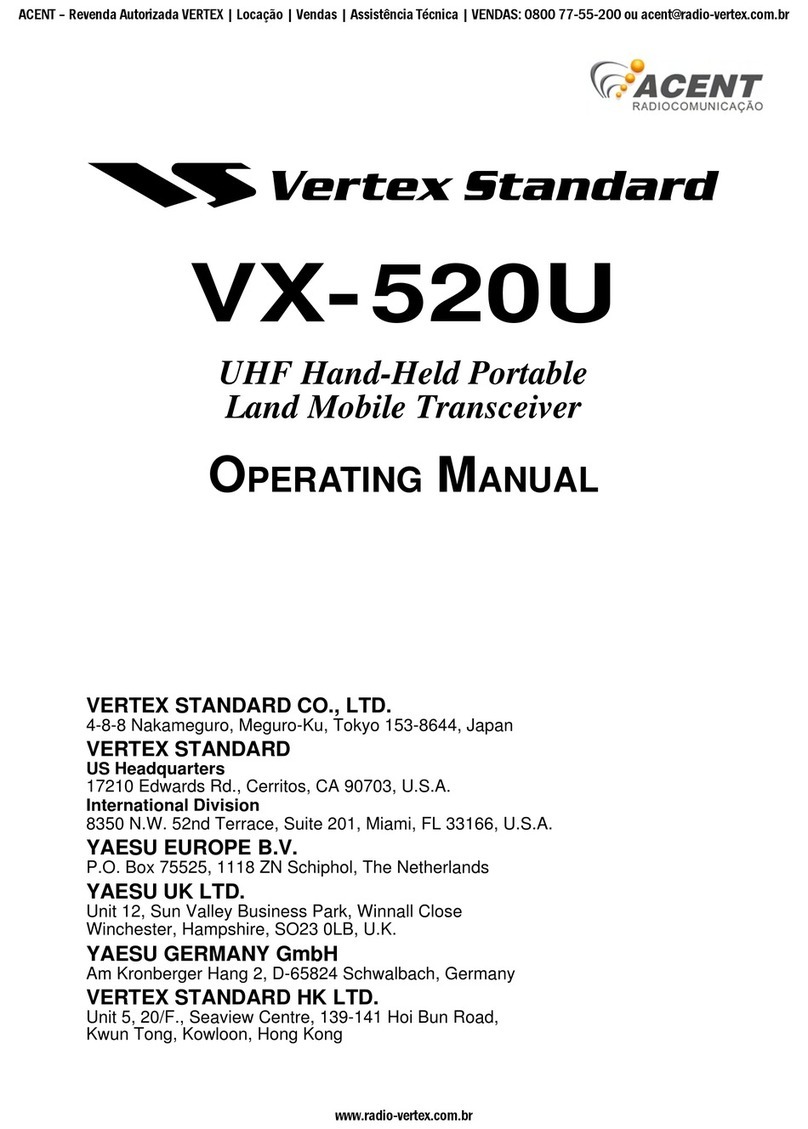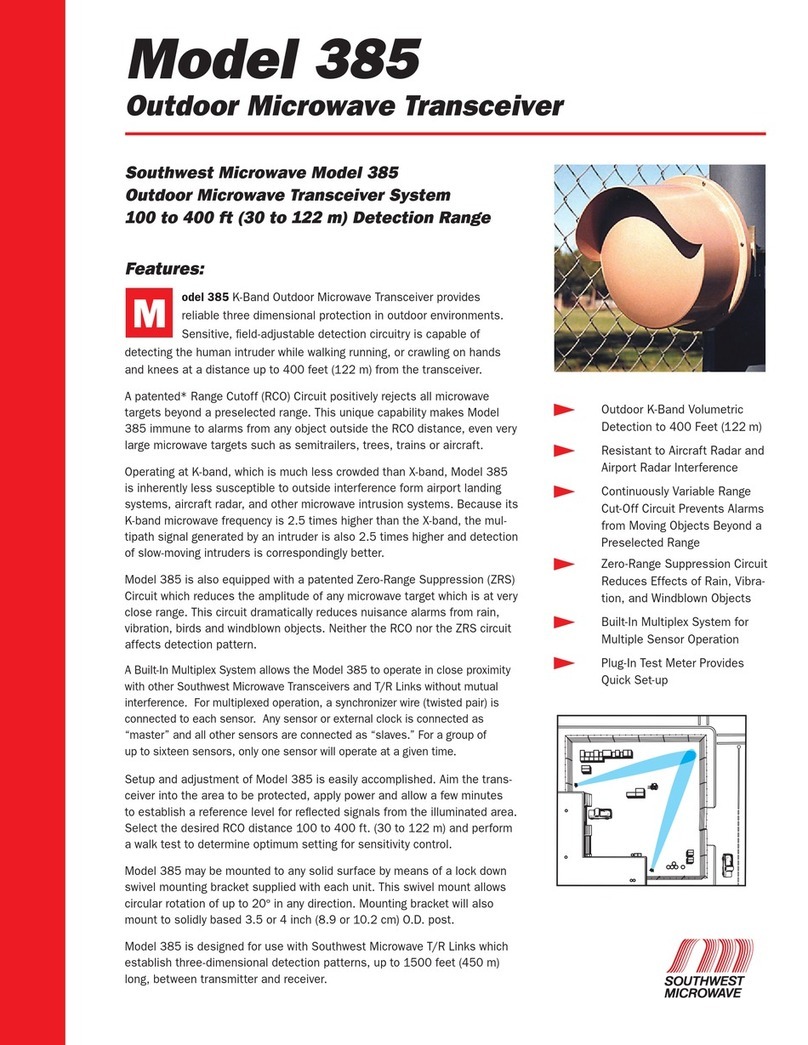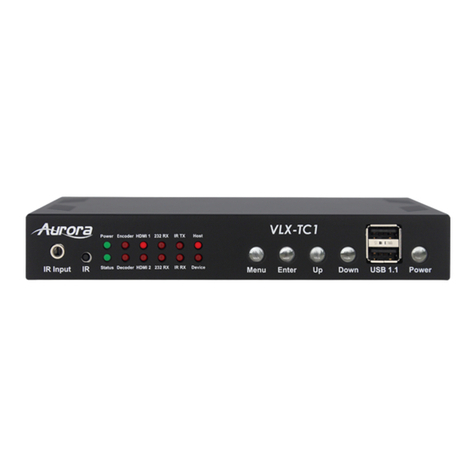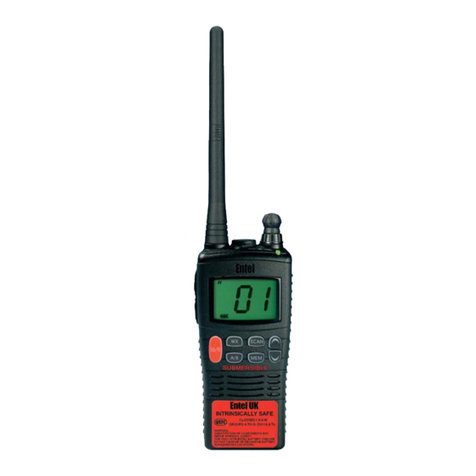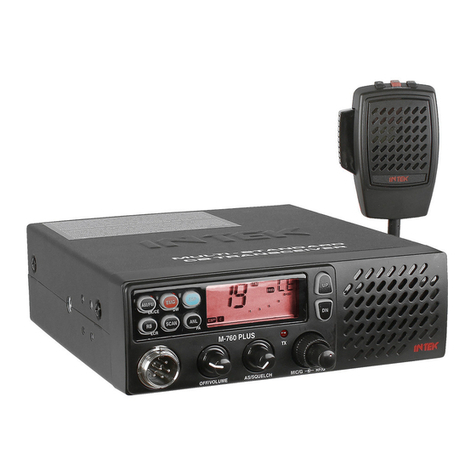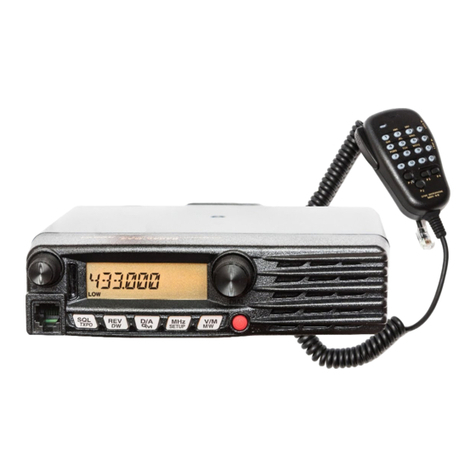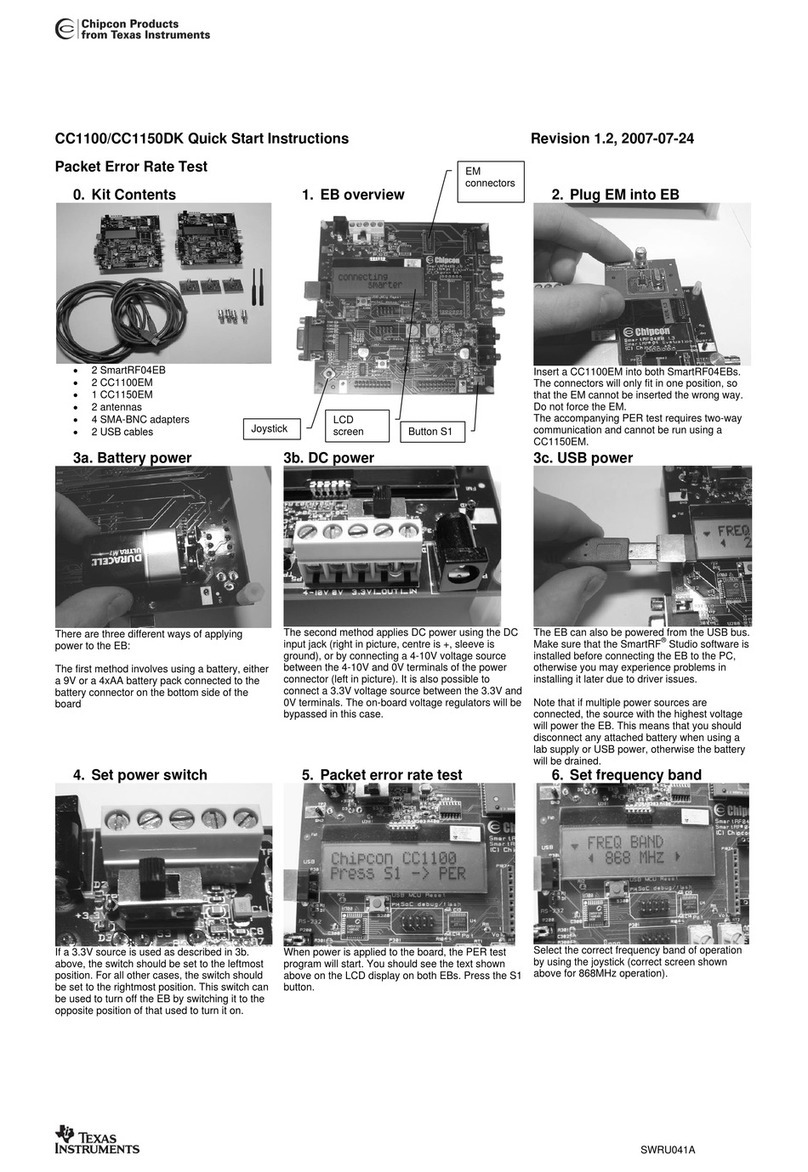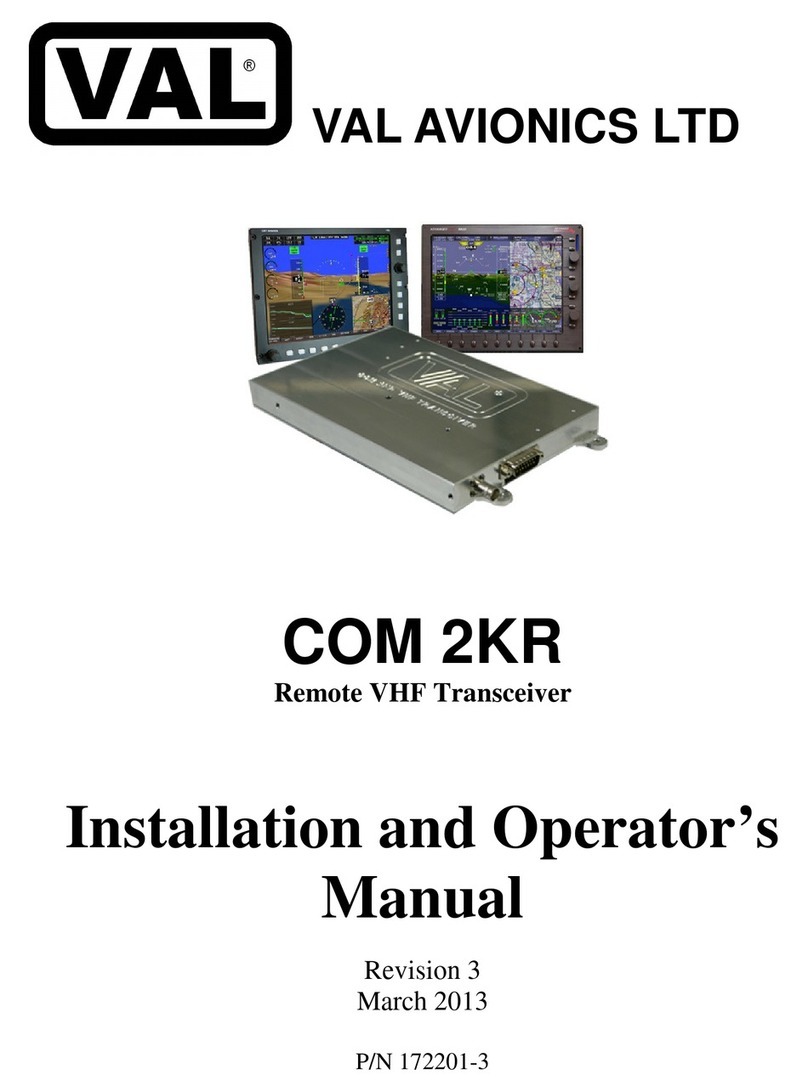Keysight Technologies M1749B User manual

Getting Started
Guide
Keysight mmWave Reference Solutions
M1749B Performance mmWave Transceiver
22.7 - 49 GHz

Notices
© Keysight Technologies, Inc. 2022
No part of this manual may be
reproduced in any form or by any
means (including electronic storage
and retrieval or translation into a
foreign language) without prior
agreement and written consent from
Keysight Technologies, Inc. as
governed by United States and
international copyright laws.
Trademark Acknowledgments
Manual Part Number
M1749-90003
Edition
Edition 1, January 2022
Printed in USA/Malaysia
Published by:
Keysight Technologies
1400 Fountaingrove Parkway
Santa Rosa, CA 95403
Warranty
THE MATERIAL CONTAINED IN THIS
DOCUMENT IS PROVIDED “AS IS,”
AND IS SUBJECT TO BEING
CHANGED, WITHOUT NOTICE, IN
FUTURE EDITIONS. FURTHER, TO
THE MAXIMUM EXTENT PERMITTED
BY APPLICABLE LAW, KEYSIGHT
DISCLAIMS ALL WARRANTIES,
EITHER EXPRESS OR IMPLIED WITH
REGARD TO THIS MANUAL AND
ANY INFORMATION CONTAINED
HEREIN, INCLUDING BUT NOT
LIMITED TO THE IMPLIED
WARRANTIES OF
MERCHANTABILITY AND FITNESS
FOR A PARTICULAR PURPOSE.
KEYSIGHT SHALL NOT BE LIABLE
FOR ERRORS OR FOR INCIDENTAL
OR CONSEQUENTIAL DAMAGES IN
CONNECTION WITH THE
FURNISHING, USE, OR
PERFORMANCE OF THIS
DOCUMENT OR ANY INFORMATION
CONTAINED HEREIN. SHOULD
KEYSIGHT AND THE USER HAVE A
SEPARATE WRITTEN AGREEMENT
WITH WARRANTY TERMS
COVERING THE MATERIAL IN THIS
DOCUMENT THAT CONFLICT WITH
THESE TERMS, THE WARRANTY
TERMS IN THE SEPARATE
AGREEMENT WILL CONTROL.
Technology Licenses
The hardware and/or software
described in this document are
furnished under a license and may be
used or copied only in accordance
with the terms of such license.
U.S. Government Rights
The Software is “commercial
computer software,” as defined
by Federal Acquisition Regulation
(“FAR”) 2.101. Pursuant to FAR
12.212 and 27.405-3 and
Department of Defense FAR
Supplement (“DFARS”) 227.7202,
the U.S. government acquires
commercial computer software
under the same terms by which
the software is customarily
provided to the public.
Accordingly, Keysight provides
the Software to U.S. government
customers under its standard
commercial license, which is
embodied in its End User License
Agreement (EULA), a copy of
which can be found at
http://www.keysight.com/find/sweula
The license set forth in the EULA
represents the exclusive authority
by which the U.S. government
may use, modify, distribute, or
disclose the Software. The EULA
and the license set forth therein,
does not require or permit,
among other things, that
Keysight: (1) Furnish technical
information related to
commercial computer software
or commercial computer
software documentation that is
not customarily provided to the
public; or (2) Relinquish to, or
otherwise provide, the
government rights in excess of
these rights customarily provided
to the public to use, modify,
reproduce, release, perform,
display, or disclose commercial
computer software or
commercial computer software
documentation. No additional
government requirements
beyond those set forth in the
EULA shall apply, except to the
extent that those terms, rights, or
licenses are explicitly required
from all providers of commercial
computer software pursuant to
the FAR and the DFARS and are
set forth specifically in writing
elsewhere in the EULA. Keysight
shall be under no obligation to
update, revise or otherwise
modify the Software. With
respect to any technical data as
defined by FAR 2.101, pursuant
to FAR 12.211 and 27.404.2 and
DFARS 227.7102, the U.S.
government acquires no greater
than Limited Rights as defined in
FAR 27.401 or DFAR 227.7103-5
(c), as applicable in any technical
data.
Safety Notices
A CAUTION notice denotes a hazard. It
calls attention to an operating
procedure, practice, or the like that,
if not correctly performed or adhered
to, could result in damage to the
product or loss of important data. Do
not proceed beyond a CAUTION
notice until the indicated conditions
are fully understood and met.
A WARNING notice denotes a hazard.
It calls attention to an operating
procedure, practice, or the like that,
if not correctly performed or adhered
to, could result in personal injury or
death. Do not proceed beyond a
WARNING notice until the indicated
conditions are fully understood and
met.

3
Where to Find the Latest Information
To contact Keysight for sales and technical support, refer to support links on the following Keysight websites.
For product specific information and support, software and documentation updates:
http://www.keysight.com/find/m1749b
Worldwide contact information for repair and service:
http://www.keysight.com/find/assist
To contact Keysight Technologies:
http://www.keysight.com/find/contactus
To receive the latest updates by email, subscribe to Keysight Email Updates at the following URL:
http://www.keysight.com/find/MyKeysight
Information on preventing instrument damage can be found at:
www.keysight.com/find/PreventingInstrumentRepair
Is your product software up-to-date?
Periodically, Keysight releases software updates to fix known defects and incorporate product enhancements. To search
for software updates for your product, go to the Keysight Technical Support website at:
http://www.keysight.com/find/techsupport

4

Contents
Getting Started Guide 5
Table of Contents
Safety & Environmental Information 7
Warning Statements and Symbols 8
Safety 9
Safety Compliance 9
Safe Installation 9
Acoustic statement (European Machinery Directive) 9
General Safety Notices 9
Environmental Conditions (Operating) 10
Environmental Information 10
EMC (Electromagnetic Compatibility) 11
South Korean Class A EMC declaration 11
Declaration of Conformity 11
Ventilation 12
Power requirements 13
Power requirements of the AC adapter 13
Using Accessories 13
Weight and Dimensions 14
Protecting against electrostatic discharge 14
Instrument Maintenance 15
Cleaning the Instrument 15
Connector Care 15
Connector Cleaning 16
Quick Start 17
Purpose and Function 18
Initial Inspection 20
Shipping Problems? 20
Location and Mounting 21
Exterior Features 23
DUT-Facing Side 24
Instrument-Facing Side 26
Labels and Symbols 29
Functionality 33
Simplified Block Diagram 34

7
Keysight Wireless Test Set
M1749B Performance mmWave Transceiver
Getting Started Guide
1 Safety & Environmental Information
The following topics can be found in this section:
“Warning Statements and Symbols” on page 8
“Safety” on page 9
“Environmental Conditions (Operating)” on page 10
“EMC (Electromagnetic Compatibility)” on page 11
“Ventilation” on page 12
“Power requirements” on page 13
“Using Accessories” on page 13
“Weight and Dimensions” on page 14
“Protecting against electrostatic discharge” on page 14
“Instrument Maintenance” on page 15

8 Getting Started Guide
Safety & Environmental Information
Warning Statements and Symbols
Warning Statements and Symbols
Caution and Warning notices are used in this document are described below.
See also: “Labels and Symbols” on page 29.
A CAUTION notice denotes a hazard. It calls attention to an operating
procedure, practice, or the like that, if not correctly performed or adhered to,
could result in damage to the product or loss of important data. Do not proceed
beyond a CAUTION notice until the indicated conditions are fully understood
and met.
A WARNING denotes a hazard. It calls attention to an operating procedure,
practice or the like that, if not correctly performed or adhered to, could result in
personal injury or death. Do not proceed beyond a WARNING notice until the
indicated conditions are fully understood and met.

Getting Started Guide 9
Safety & Environmental Information
Safety
Safety
This product has been designed and tested in accordance with accepted
industry standards, and has been supplied in a safe condition.The
documentation contains information and warnings that must be followed by
the user to ensure safe operation and to maintain the product in a safe
condition.
Safety Compliance
This product complies with the essential requirements of the European Low
Voltage Directive as well as current editions of the following standards (dates
and editions are cited in the Declaration of Conformity):
— IEC/EN 61010-1
Safe Installation
Safety of any system incorporating this equipment is the responsibility of the
assembler of the system.
Acoustic statement (European Machinery Directive)
Acoustic noise emission
LpA <70 dB
Operator position
Normal operation mode per ISO 7779
General Safety Notices
If this product is not used as specified, the protection provided by the
equipment could be impaired. This product must be used in a normal condition
(in which all means for protection are intact) only.
No operator serviceable parts inside. Refer servicing to qualified personnel. To
prevent electrical shock, do not remove covers.

10 Getting Started Guide
Safety & Environmental Information
Environmental Conditions (Operating)
Environmental Conditions (Operating)
This product is designed for use in the following conditions:
— For indoor use only
— Altitude up to 3000 m
— Temperature 10 to 40°C
— Maximum relative humidity 95% (non-condensing)
Environmental Information
Samples of this product have been type tested in accordance with the Keysight
Environmental Test Manual and verified to be robust against the environmental
stresses of Storage, Transportation and End-use; those stresses include but
are not limited to temperature, humidity, shock, vibration, altitude and power
line conditions.
Test Methods are aligned with IEC 60068-2 and levels are similar to
MIL-PRF-28800F Class 3.
This product is designed for use in INSTALLATION CATEGORY II and
POLLUTION DEGREE 2, per IEC 61010-1 Third Edition and 664 respectively.

Getting Started Guide 11
Safety & Environmental Information
EMC (Electromagnetic Compatibility)
EMC (Electromagnetic Compatibility)
This product complies with the essential requirements of the European EMC
Directive as well as current editions of the following standards (dates and
editions are cited in the Declaration of Conformity):
— IEC/EN 61326-1
— CISPR Pub 11 Group 1, class A
— AS/NZS CISPR 11
— ICES/NMB-001(A)
This ISM device complies with Canadian ICES-001.
Cet appareil ISM est conforme a la norme NMB-001 du Canada.
South Korean Class A EMC declaration
This equipment has been conformity assessed for use in business
environments. In a residential environment this equipment may cause radio
interference.
Declaration of Conformity
The Declaration of Conformity for any Keysight product can be found on the
website:
http://www.keysight.com/go/conformity
This equipment is not intended for use in residential environments and may not
provide adequate protection to radio reception in such environments.
This is a sensitive measurement apparatus by design and may have some
performance loss during receive measurements using a low input range setting.
Ambient continuous electromagnetic phenomena between 2.3 and 4.1 GHz may
appear at up to 55 dB above DANL using the M1749B Tx/Rx ports.

12 Getting Started Guide
Safety & Environmental Information
Ventilation
Ventilation
VENTILATION REQUIREMENTS: When installing the instrument(s) into a
cabinet, consideration shall be given to the convection flow into and out of the
cabinet. Consideration shall also be given to the individual instruments to avoid
having the heated discharge of one instrument, now becoming the cooling
intake air for another instrument.
Do not place the transceiver against any surface in such a way as to block its
ventilation openings. Interfering with ventilation airflow can cause the
transceiver to overheat.
Another area of concern is verification that the maximum ambient operating
temperature of the instrument(s) is not exceeded by cabinet installation.
Keysight recommends forced air convection whenever an instrument(s) are
installed in a cabinet and further recommends that the maximum operating
temperature of the cabinet be reduced 10°C from the lowest, of the maximum
operating temperature of a single instrument.
If there are any concerns or special requirements an Keysight Field Engineer
should be consulted to assure instrument(s) temperature compliance and
performance.

Getting Started Guide 13
Safety & Environmental Information
Power requirements
Power requirements
The M1749B does not have an AC power connection. It is powered by a 19 Volt
DC input from an AC/DC converter. This input does not represent a risk of
personal injury.
Power requirements of the AC adapter
— Input: 100-240VAC, 50-60 Hz, 2.5 - 1 A
— Input power stability: the AC-DC adapter is certified and can operate with
mains supply voltage fluctuations up to ±10% of the nominal voltage.
— Output: 19 VDC, 6 A
The main power cord is the system disconnecting device. It disconnects the
mains circuits from the mains supply.
Using Accessories
Only Keysight-approved accessories shall be used.
Use the AC-DC power adapter and power cord which is supplied with the
product.
See the accessories listed under “Initial Inspection” on page 20.
Do not remove the DC input plug from the M1749B while it is in an active state.
Make sure the Status LED on the DUT-facing side of the M1749B is dark
before disconnecting the DC input.
This is a Safety Protection Class I Product (provided with a protective earthing
ground incorporated in the power cord). The mains plug shall only be inserted in
a socket outlet provided with a protective earth contact. Any interruption of the
protective conductor inside or outside of the product is likely to make the
product dangerous. Intentional interruption is prohibited.
This instrument has auto-ranging line voltage input. Be sure the supply voltage
is within the specified range, and that voltage fluctuations do not to exceed 10
percent of the nominal supply voltage.

14 Getting Started Guide
Safety & Environmental Information
Weight and Dimensions
Weight and Dimensions
The weight and dimensions of the M1749B are as follows.
—Weight:3.5kg
—Height:70mm
— Width: 175 mm
— Length: 345 mm
Protecting against electrostatic discharge
Electrostatic discharge (ESD) can damage or destroy electronic components
(the possibility of unseen damage caused by ESD is present whenever
components are transported, stored, or used).
Test equipment and ESD
To help reduce ESD damage that can occur while using test equipment:
• Before connecting any coaxial cable to a test set connector for the first time
each day, momentarily short the center and outer conductors of the cable
together.
• Personnel should be grounded with a 1 MΩresistor-isolated wrist-strap
before touching the center pin of any connector and before removing any
assembly from the test set.
• Be sure that all instruments are properly earth-grounded to prevent
build-up of static charge.
• Perform work on all components or assemblies at a static-safe workstation.
• Keep static-generating materials at least one meter away from all
components.
• Store or transport components in static-shielding containers.
• Always handle printed circuit board assemblies by the edges. This reduces
the possibility of ESD damage to components and prevent contamination of
exposed plating.
Additional information about ESD
For more information about ESD and how to prevent ESD damage, contact the
Electrostatic Discharge Association (http://www.esda.org). The ESD standards
developed by this agency are sanctioned by the American National Standards
Institute (ANSI).
Do not use these first three techniques when working on circuitry with a voltage
potential greater than 500 volts.

Getting Started Guide 15
Safety & Environmental Information
Instrument Maintenance
Instrument Maintenance
Cleaning the Instrument
Connector Care
Threaded connectors can be damaged when cables are connected to them,
particularly if they are over-tightened (this could break the signal path entirely,
making the M1749B non-functional).
Factory-installed semi-rigid jumper cables between connectors should be left
permanently in place.
Because connectors can become defective due to wear during normal use, all
connectors should be inspected and maintained to maximize their service life.
Inspect the mating surface each time a connection is made.
Metal particles from connector threads often find their way onto the mating
surface when a connection is made or disconnected. Clean dirt and
contamination from the connector mating surface and threads.
Disconnect the M1749B from all cables before cleaning. Use a dry cloth or one
slightly dampened with water to clean the external case parts. Do not attempt
to clean internally.
When attaching cables to threaded connectors, use a torque wrench to apply
the proper torque, as described in the table below.
Connector Type Torque Wrench
Part Number
Wrench
Opening
Torque Setting
3.5 mm, 2.92 mm,
2.4 mm, 1.85 mm
8710-1765 5/16 in 90 N-cm (8 in-lb)
Type-N 50 Ωor75 Ω8710-1766 3/4 in 135 N-cm (12 in-lb)

16 Getting Started Guide
Safety & Environmental Information
Instrument Maintenance
Connector Cleaning
Cleaning connectors with isopropyl alcohol shall only be done with all cables
disconnected, and in a well-ventilated area. Allow all residual alcohol moisture
to evaporate, and the fumes to dissipate prior to energizing the instrument.
Keep isopropyl alcohol away from heat, sparks, and flame. Store in a tightly
closed container. The alcohol shall not be stored, or left open, in the area of the
equipment. Use isopropyl alcohol with adequate ventilation to prevent the
combustions of fumes or vapors.
Avoid contact with eyes, skin, and clothing, as isopropyl alcohol causes skin
irritation, may cause eye damage, and is harmful if swallowed or inhaled. It may
be harmful if absorbed through the skin. Wash thoroughly after handling. In case
of spill, soak up with sand or earth. Flush spill area with water. Dispose of
isopropyl alcohol in accordance with all applicable federal, state, and local
environmental regulations.
In case of fire, use alcohol foam, dry chemical, or carbon dioxide; water may be
ineffective.

18 Getting Started Guide
Quick Start
Purpose and Function
Purpose and Function
The M1749B Performance mmW Transceiver is designed to be used as the
millimeter-wave interface between a wireless test system and a
millimeter-wave Device Under Test. The M1749B upconverts the test system’s
Tx output to the higher range of the DUT, and downconverts the received signal
from the DUT to the lower range of the test system’s Rx input.
The DUT-facing ports of the M1749B (RF Tx/Rx 1 and RF Tx/Rx 2) are
half-duplex ports -- that is, either port can transmit or receive (although never
both at once).
Figure 2-1 M1749B used as an RF/mmWave interface
On the left side of the M1749B in the diagram, the Tx IF In port takes an input
from the test system and upconverts it to the higher range of the DUT. Signals
received from the DUT are downconverted and returned to the test system
from the Rx IF Out port. In upconverting and downconverting, the M1749B

Getting Started Guide 19
Quick Start
Purpose and Function
uses two reference inputs (from the test system): the fixed-frequency 9.6 GHz
In and the variable-frequency LO In. The LO input can include a modem control
signal, with embedded triggers; this eliminates the need for the USB controller
and trigger lines shown in the illustration.
The supplied AC/DC adapter provides a 19 VDC power input to the M1749B
(this can also be done by a DC power supply, if one is included in the system
steup).
The diagram below shows an example of the M1749B interfacing with a
specific test set (the E7515B UXM 5G Wireless Test Platform).
Figure 2-2 Example setup: M1749B used with E7515B UXM system

20 Getting Started Guide
Quick Start
Initial Inspection
Initial Inspection
Inspect the shipping container and the cushioning material for signs of stress.
Retain undamaged shipping materials for future use, as you may wish to ship
the test set to another location or to Keysight Technologies for service. Verify
the contents of the container against the table below.
Shipping Problems?
If the shipping materials are damaged or the contents of the container are
incomplete:
— Contact the nearest Keysight Technologies office.
— Keep the shipping materials for the carrier’s inspection.
— If you must return a test set to Keysight Technologies, use the undamaged
original or comparable shipping materials. See “Returning the M1749B for
Service” on page 41.
Item Deliverable Description
Getting Started Guide (this
document)
Provides first-time power on
instructions, licensing
information, operating system
information, and general
hardware information.
Keysight M1749B mmWave
Transceiver
AC/DC power converter
Part# 0950-6166
Provides DC power input (19 V) to
instrument-facing panel of
M1749B.
AC power cable (Cord type varies by country.)
Table of contents
Other Keysight Technologies Transceiver manuals
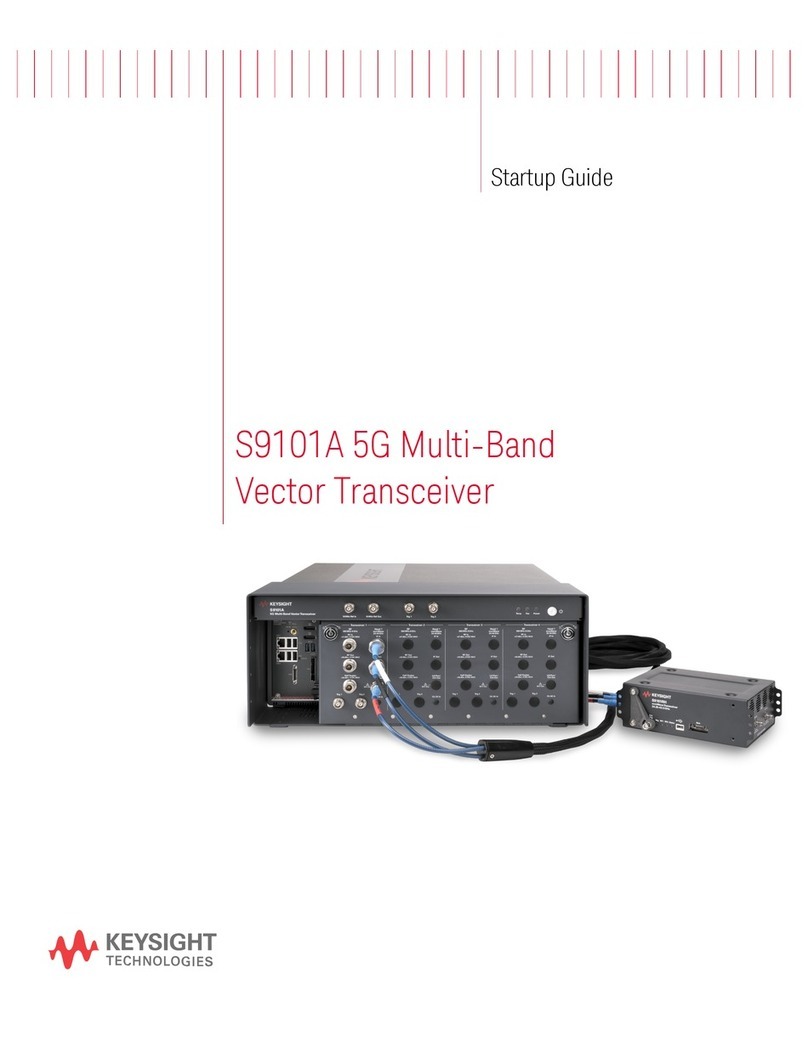
Keysight Technologies
Keysight Technologies S9101A User guide
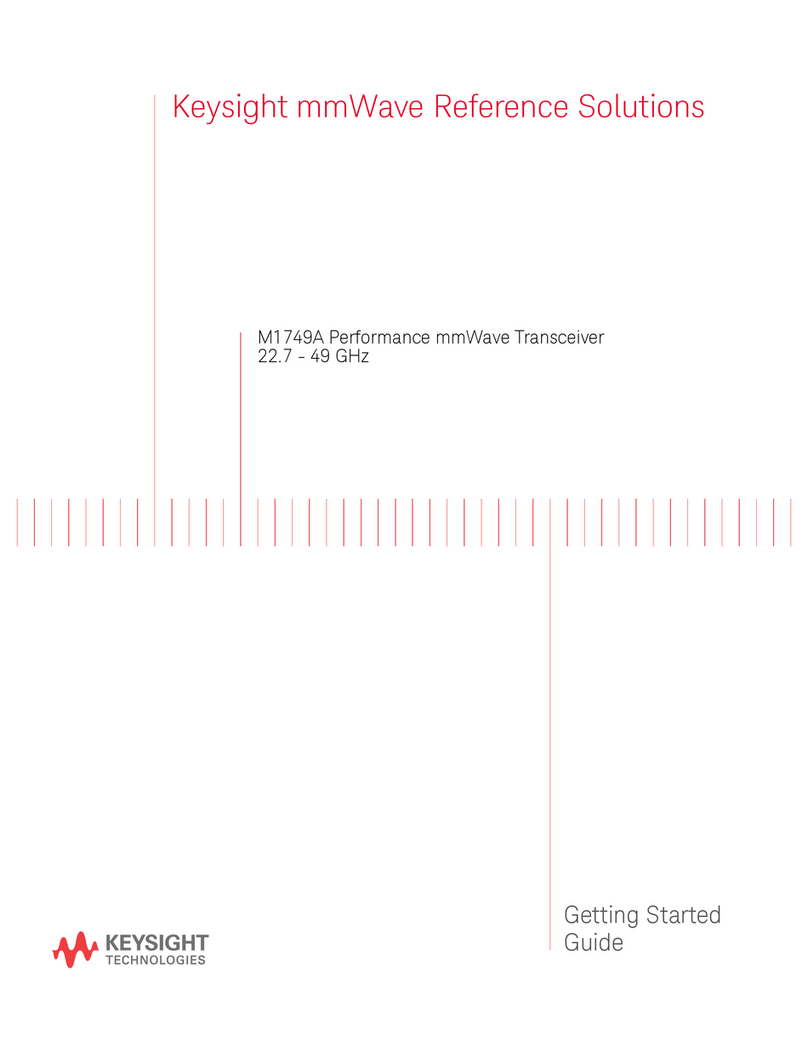
Keysight Technologies
Keysight Technologies M1749A User manual
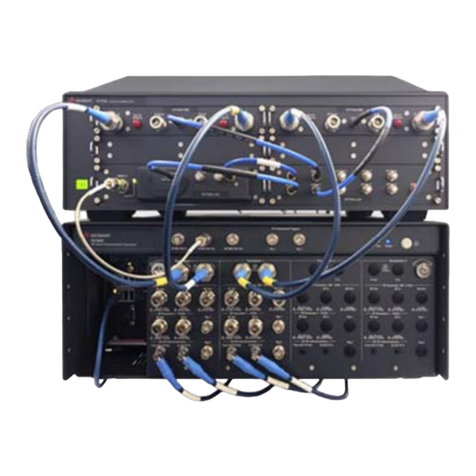
Keysight Technologies
Keysight Technologies S9106AC-42D User guide
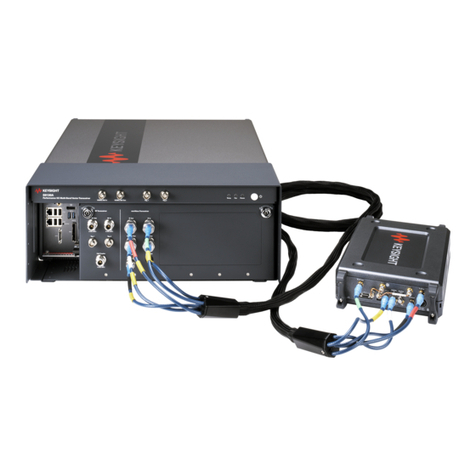
Keysight Technologies
Keysight Technologies S9130A User manual
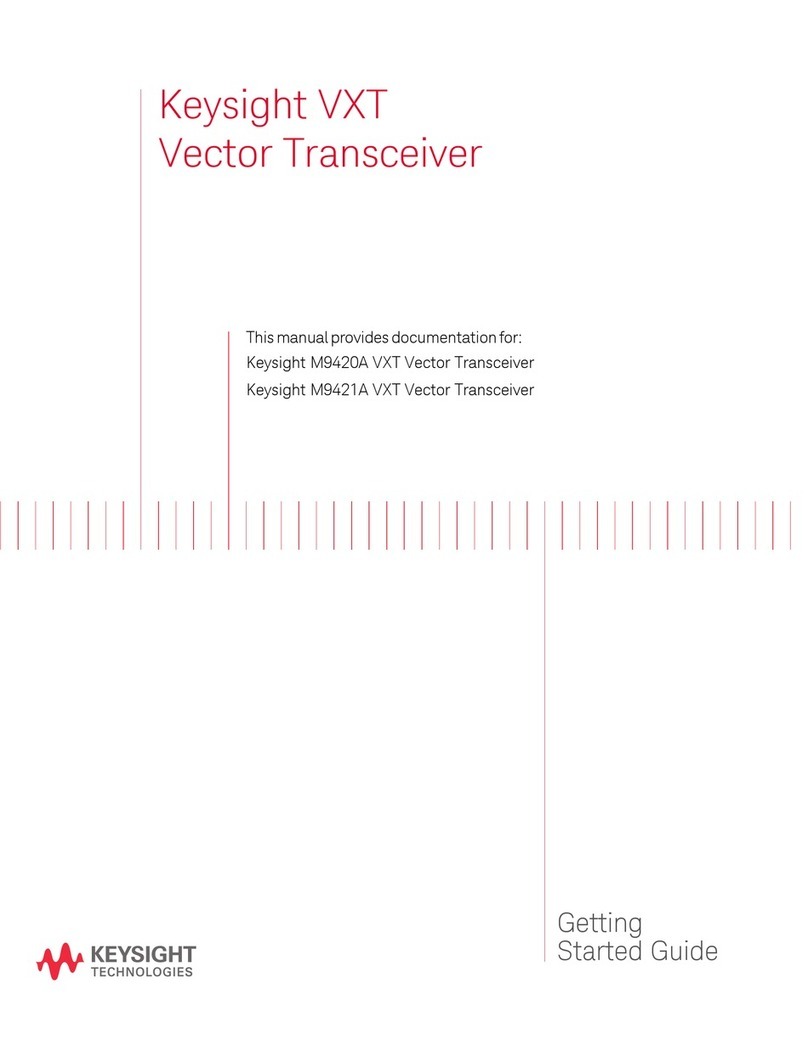
Keysight Technologies
Keysight Technologies M9420A User manual
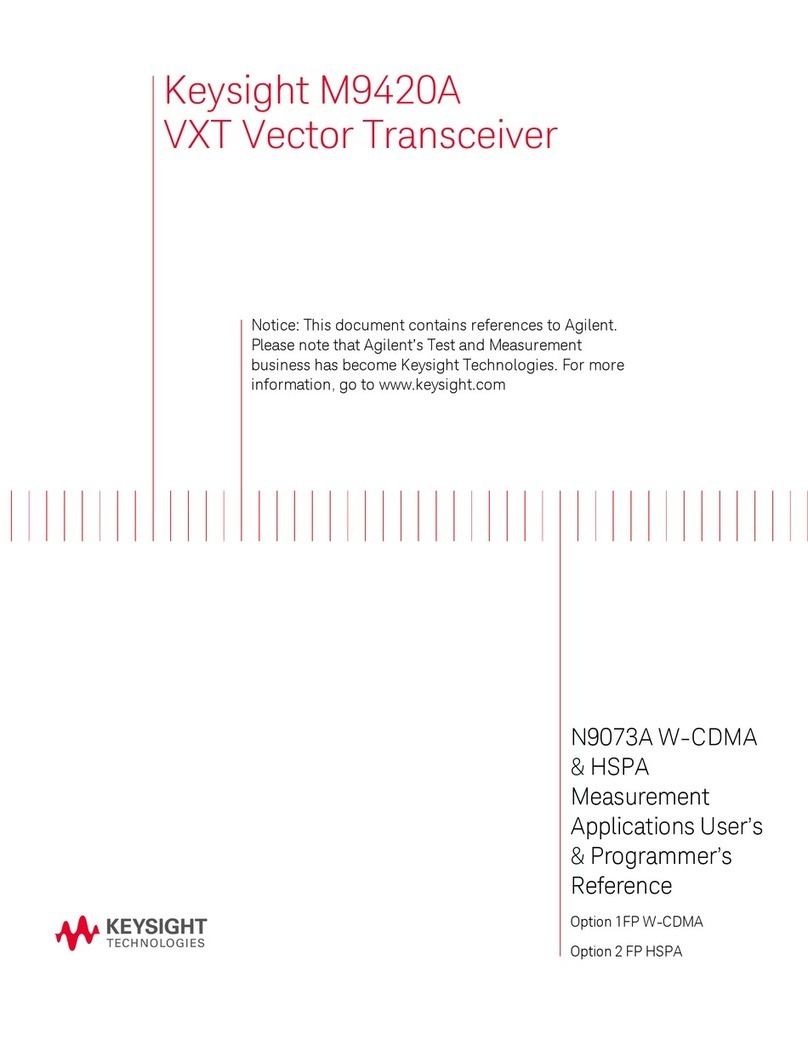
Keysight Technologies
Keysight Technologies M9420A User manual
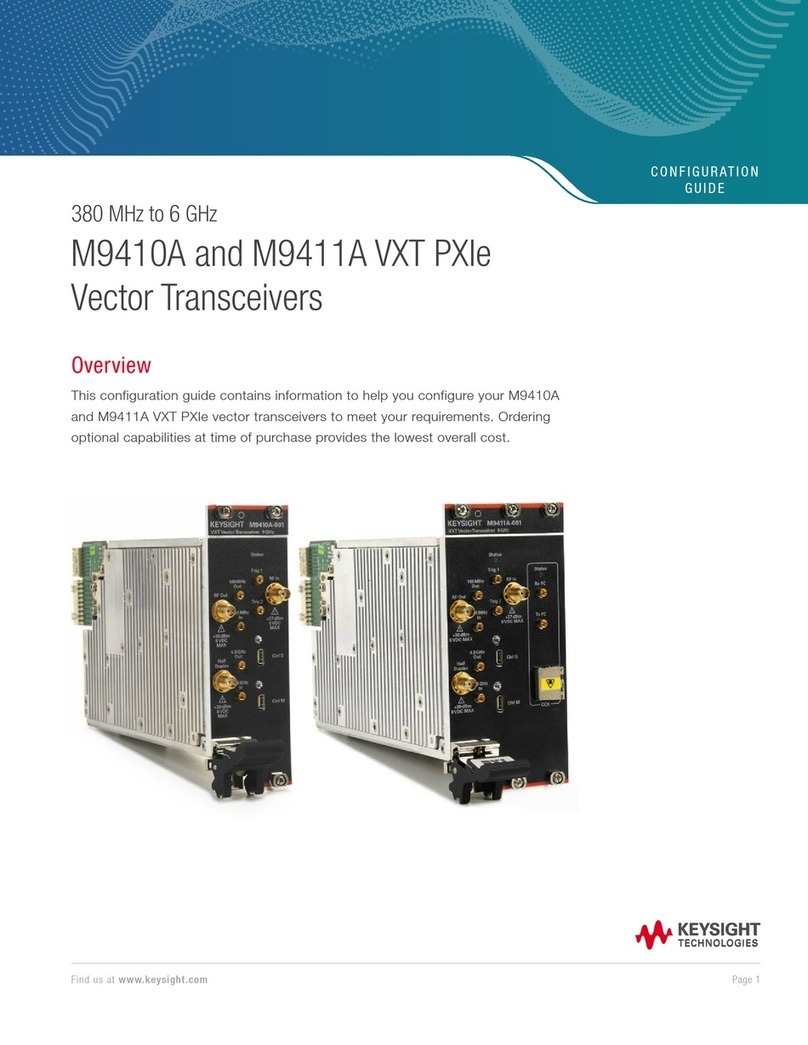
Keysight Technologies
Keysight Technologies M9410A User manual
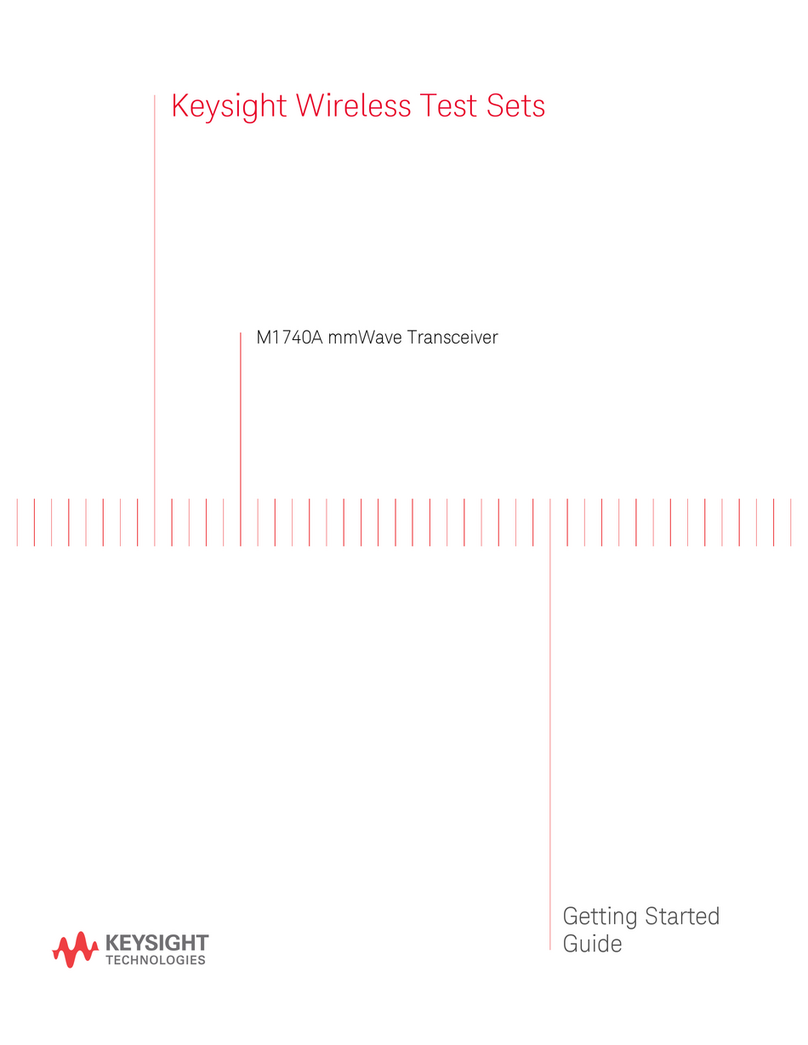
Keysight Technologies
Keysight Technologies M1740A User manual
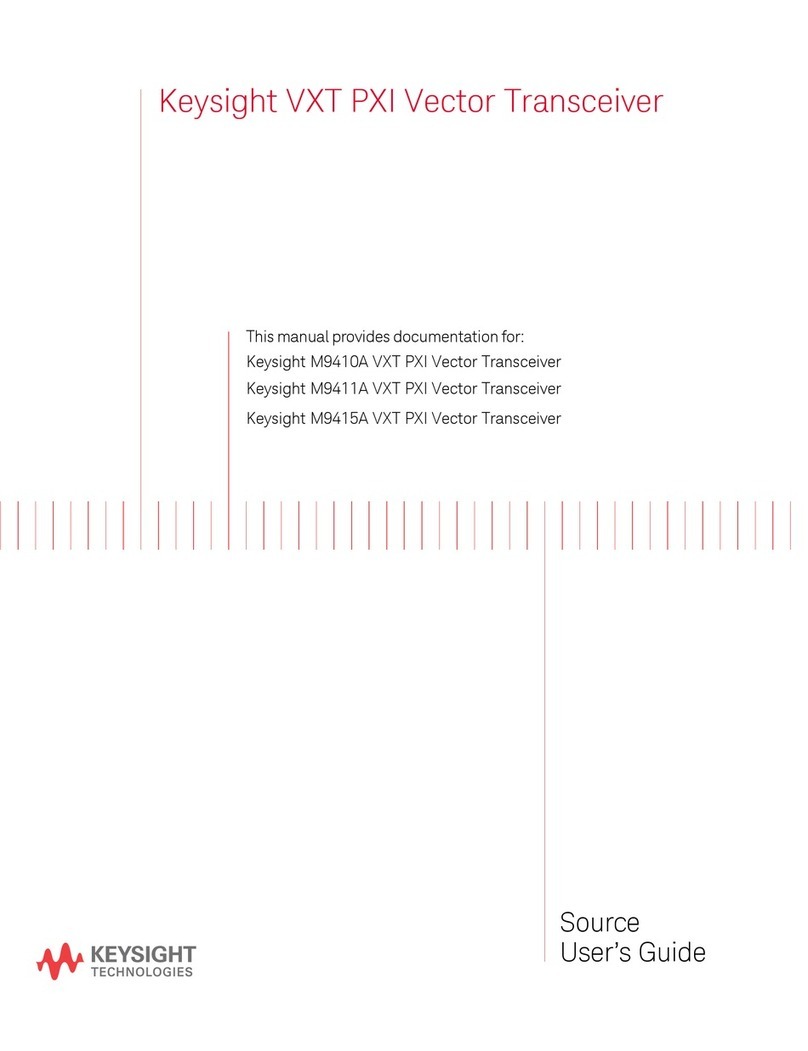
Keysight Technologies
Keysight Technologies M9411A User manual

Keysight Technologies
Keysight Technologies S9101A User guide


